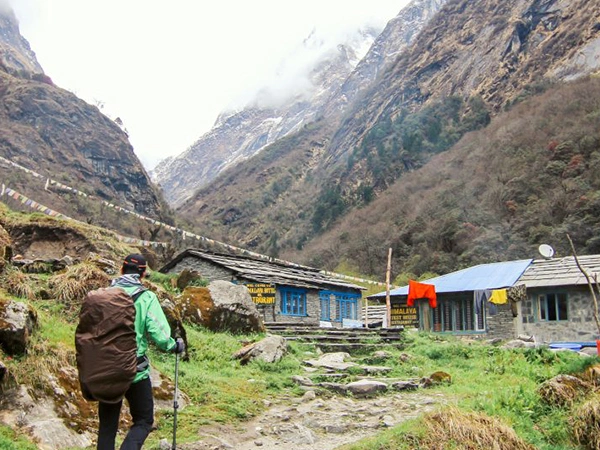There is hardly anyone who doesn’t know or at least heard about the tallest peak in the world, Mt. Everest (8,848.86 meters). Similarly, there are also very few people who are familiar with the iconic journey in the Himalayas that takes straight to the base of the mightiest alpine wonder in the world. It may be the goal of every mountaineering lover to scale the highest snow-capped in the world at least once in a lifetime, but people who can’t physically push all the way to the top of the world settle for the magnificent ambiance by doing Everest Base Camp Trek. This high-altitude base camp adventure is a rewarding way to embrace and relish the beauty of Everest from up close. So, if you are looking forward to this trip and wondering about the best timeframe to make the most out of it, Everest Base Camp Trek in September goes neck-to-neck with all top contender month for this Himalayan journey.
September, which si the transition month between monsoon (June to August) and autumn (Septemeber to November), does have a unique charm about it. Besides the lingering post-monsoon atmosphere, the freshness of the landscape with pristine emerald beauty, dust-free trails, cool climate, and breezes, less crowd, and exhilarating cultural experience are some other highlights of doing Everest Base Camp Trek in September. So, if you are curious about what your journey packs in this month, your trekking opinion, the challenges you have to face, and tips to make your journey memorable, stick to the end of the article.
Why September is a Good Time to Trek?
Fresh and Cool Climate
The climatic conditions of the monsoon season (June to August) can sometimes stretch till the half part of September. Thus, the freshness and cool atmosphere that are key highlights of the monsoon season can also be experienced while doing the Everest Base Camp Trek in September. The temperatures of the summer period start to simmer down, and you will be able to experience a favorable climate that perfectly accommodates outdoor explorations. On top of that, the cloudy and foggy landscapes during the rainy days will make it seem like you are walking over the clouds in a heavenly realm.
Less Crowd
As this month is the transition period between monsoon and spring season, most trekkers tend to avoid doing Everest Base Camp Trek in September. Most trekkers prefer to avoid the inconvenience that rainfall brings and the potential risks of natural disasters after the full-throttle monsoon. So, such a setting guarantees a remarkably serene experience in this mainstream route where you don’t have to worry about the large crowds. You can take your time to explore the highlights in the region and have more meaningful conversations with the locals.
Enchanting Landscapes and High Tide Rivers/Waterfalls
Although the peak point of monsoon starts to simmer down and flooding of rivers and rivulets starts to decline gradually, during this transition month, they are still in their prime form. The rivers, rivulets, and waterfalls along the trekking trail are at their grandest form this month, which is right after the monsoon season. So, the sound of high flowering rivers, streams, and waterfalls, and the enchanting sparkling emerald strewn landscape will offer a distinct experience during Everest Base Camp Trek in September.
Less Dusty Trails
If you have done Himalayan treks in Nepal, then you know how dusty the road can be during the dry seasons. Due to the low precipitation rate in the Himalayan region, the trekking trails are generally dry and dusty. However, during the monsoon season and this post-monsoon month, you can completely bypass the dust trails to enjoy the stunning beauty of the surrounding region and epic mountain vistas. You also won’t have to worry about the bothersome dust that covers your hair, clothes, and luggage; you can just relish the freshness and enjoy a dust-free journey.
Incredible Cultural Experience
You might be familiar with this already; the autumn season is the period of the grandest celebrations in Nepal. Some of the biggest and most colorful festivals in Nepal take place in this season. September, which is the part of the autumn season, is also not behind when it comes to the incredible cultural experience. The biggest festival in the country, Bijaya Dashain (which lasts a total of 15 days), starts this month. Also, as Nepal follows the lunar calendar system, the festivals don’t particularly have specified dates. Thus, if you are lucky you will also get the chance to witness other fascinating festivals in the country, like Indra Jatra and Pachali Bhairab in this month.
Weather and Climate
Temperature Ranges (Daytime and Nighttime)
As September is a post-monsoon month, the atmosphere in this season is generally fresh. If the monsoon season extends the first part of this month receives some light rainfall. Thus, the terrains are still decorated with the lushness of emeralds; mornings are fresh and cool, and the whole landscape feels refreshing. The temperature of the Everest region during this post-monsoon month generally ranges between 18°C to 24°C. However, this is just the daytime temperatures at the lower elevation points. At night, the temperatures at the lower trekking trails can drop upto -5°C.
Similarly, as you ascend higher, the temperature starts to drop gradually, and above the alpine zones (4,000 meters above), the temperature of the region averages between 0°C to 10°C during the day time and at the night and early morning, it can drop as low as -10°C to -15°C.
Rainfall Patterns and Monsoon Tail-end Effects
There isn’t any specific pattern for the rainfall this month, so you don’t have to worry about the bad weather conditions that can affect your experience during Everest Base Camp Trek in September. Even if there is light rainfall during this month, it generally occurs during the evening and nighttime (mostly), with a very low probability of rainfall during the morning and day. So, even if you are taking part in the exploration of this mainstream route in this route, you will not need to worry about the rainfall affecting the overall itinerary plans. The rainfall is rarely as heavy and as consistent as the monsoon season.
Still, the monsoon is a point of nature with high risks of natural calamities like floods, landslides, soil erosion, water contamination, etc; you will have to be careful about these factors during your trek. The wave of monsoons slowly starts to simmer down during the mid-way of September, and water flow in rivers and rivulets starts to decrease; the trails are dry, and the landslide-prone areas are also much safer to cross at that point.
Best Times of Day for Clear Views
In general, the morning is considered to be the best period to catch the stunning views of the mountain during the Everest Base Camp Trek in September. During the morning, the skies are clear and spectacular, and the morning light also enhances the beauty of the mountains as different colors of sun rays reflect on the pristine snow. That’s the hikes to the viewpoint in the Himalayas are done in the morning. The morning weather is much more stable, and there is less wind, which creates a suitable setting for clear mountain views.
However, it doesn’t mean that you won’t be able to enjoy the epic Himalayan panorama during the daytime or evening. In case of bad weather, the days can be cloudy, and the evening period can be foggy due to the cold climate. So, it will be best if you prepare to catch the radiating magnificence of the eastern Himalayan peaks during the morning time.
Trekking Route and Itinerary
Everest region is the most popular trekking destination, not just in Nepal but across the globe as well. As this is the home base of the highest alpine mountain in the world, Mount Everest (8,848.86 meters), this is the ultimate destination for alpine adventure enthusiasts. Although capable mountaineers can push all the way to the highest point on earth, it is not possible for everyone to look down at earth from its highest point. Thus, the trekking adventures to the foothills of the greatest peak in the world are the next best alternative for the explorers who want to admire the wonderous marvel of nature.
There are several ways to explore this mainstream region with the highest mountain peak in the world. The Standard 14 Days Everest Base Camp Trek, is the most general package for the remarkable journey in the region. If you are looking for a shorter form of trekking experience in the region without pushing for the higher altitudes all the way to base camp, our 10 Days Everest Panorama Trekking is the most ideal choice. Himalayas On Foot also offers a luxurious mode of exploring the base camp with our Everest Base Camp Luxury Trek, if you are looking for a more personalized experience. This luxury package includes a helicopter return flight from Kala Patthar to Kathmandu via Lukla.
Similarly, for the enthusiasts who are bounded by time constrictions, we also offer the 1 Day Everest Base Camp Helicopter Tour, where you can embrace the magical atmosphere beneath the towering peak within one day. As for the trekkers who are looking for a bit of thrill, challenge, and extended adventure in the region, 18 Day Gokyo Lake Trek with Everest Base Camp Trekking and 21 Days Three Pass Everest Base Camp Trekking are the most popular choices. On top of that, if you want to follow the footsteps of Tenzing and Hillary on the traditional route before the establishment of Lukla Aiport, the Traditional 24 Days Jiri to Everest Base Camp Trekking will let you experience and understand the great human feat in the mountaineering world. So, for your Everest Base Camp Trek in September, you can choose any of these exciting trekking packages.
Detailed Day-by-day Itinerary
The Standard 14 Days Everest Base Camp Trek follows the general mainstream route and takes you across the major highlights. Your trek in this standard package starts with a flight from Kathmandu to Lukla (2,800 meters), and then, after a short break, you will get started on the trekking trail heading toward Phakding (2,610 meters). From Phakding, you will move along the gradually inclining route across Namche Bazaar (3,440 meters), where you will enjoy an acclimatization day as well. Then, moving toward the high altitude point, you will traverse across Tengboche (3,867 meters) to reach Dingboche (4,260 meters), where you will enjoy another acclimatization day.
For the next part, you will then traverse across Lobuche (4,930 meters) and Gorak Shep (5,180 meters) to reach Everest Base Camp (5,364 meters). There is also an optional hike to Kala Patthar (5,664 meters) in the morning to enjoy the sunrise view and the panoramic vistas of the surrounding mountains. After taking your time with the exploration of the base camp, you will then head down toward Pangboche (3,985 meters) from Lobuche. Gradually following the descending trail, you will then retrace your steps across Namche to Lukla. Then, the flight back from Lukla to Kathmandu will mark the end of this exciting Himalayan journey.
Acclimatization Days and Importance
The acclimatization days are very significant in high-altitude explorations. As ascending too fast on an elevated journey can be risky as it triggers the symptoms related to altitude sickness, it is important to set enough rest days along the trail. The standard recommended margins for the high-altitude trek is ascending only upto 500 meters in a single day and using a rest day after climbing over the altitude of 1,000 meters. The trekking adventures in the Himalayan region are designed for slow-paced walking where trekkers get enough time to acclimatize to a new altitude while walking on the trail. So, several acclimatizations after a 1,000-meter altitude jump point aren’t that necessary; however, a few strategic acclimatization days will provide the body enough time to rest and acclimatize more effectively.
During our Standard 14 Days Everest Base Camp Trek, you will get two acclimatization days along the route, one at Namche Bazaar (3,440 meters) and another at Dingboche (4,260 meters). As both of these destinations have been carefully selected at the transition points between different climatic zones, you will find it much easier to acclimatize and enjoy a seamless journey. Thus, you don’t need to worry about the risk of altitude sickness and not getting enough rest during your Everest Base Camp Trek in September.
Gain Insights On:
- Everest Base Camp Short Trek 9 Days Itinerary
- What is the Fastest Way to Everest Base Camp
- How to Train for Everest Base Camp Trek?
Permits and Regulations
Necessary Permits
You will only need two permits for your Everest Base Camp Trek in September. One of these permits will grant you access to the Sagarmatha National Park; this Himalayan national park has been enlisted as a UNESCO World Heritage Site since 1979. Another is the restricted area within the region that has been conserved to protect its arts, culture, and traditions.
Permits Required For Everest Base Camp Trek in September
- Sagarmatha National Park Entry Permit
- Khumbu Rural Municipality Entry Permit
Both of these permits are essential to enjoy a seamless journey in this mainstream route. The Sagarmatha National Park Entry Permit costs approximately US$ 30 per person, and the Khumbu Rural Municipality Entry Permit is around US$ 20 per person.
How and Where to Obtain These Permits?
The Sagarmatha National Park Permit can be collected from the Nepal Tourism Board Office, which is located in Pradarshani Marg, Kathmandu. You can also collect this permit at the entrance gate of the national park in Monjo. However, be mindful that during the peak seasons, there can be a large queue to get this permit at Monjo. As for the Khumbu Rural Municipality Entry Permit, you can collect it after landing at Lukla or the national park counter at Monjo.
**Note: In order to avoid any kind of hassles during your Everest Base Camp Trek in September and to ensure a seamless journey, the Himalayas On Foot will do all the necessary paperwork and collect these permits on your behalf**
Packing List
Clothing for Varying Temperatures and Weather Conditions
As September is a post-monsoon month that still receives light rainfall during the early half, you should also prioritize packing rainproof gear if you are doing this trek during that period. The temperatures in this month are not as high as in the summer season, during the rainy days, the atmosphere is fresh and cool. So, light layers of clothes will be sufficient for trekking in the lower regions. But, near and over the alpine zones, the temperatures are constantly low, so you should also prioritize warm and comfortable layers for Everest Base Camp Trek in September.
Essential Gear (Trekking Poles, Sleeping Bag, Etc.)
After packing different layers of clothes, light layers (vest, t-shirt, cotton shirt, shorts, etc) for the lower region and warm layers (fleece jacket, insulated jacket, down jacket, trousers, etc) for the higher regions, you should focus on including the general trekking gear. Sleeping bags, trekking poles, headlamps, trekking boots, duffle bags, etc., are important to keep the experience at an optimum level. As for the season-specific trekking gear, as there are chances of light rainfall during the Everest Base Camp Trek in September, you also need to include rainproof gear like a rainproof jacket and trousers, baggage coverage, raincoat, sturdy shoes with good traction, etc for this iconic trek.
Recommended Personal Items (Sunscreen, Water Purification, Etc.)
It is important to take care of your personal hygiene, health, and sanitization during the long-haul mountain journey. Thus, you need to pack different personal items such as sunscreen cream (with UV protection), soap, shampoo, wet wipes, hand sanitizer, water purifier, personal medication, female hygiene products, etc. As you might not find the products you prefer in the mountains, you should consider buying enough to last throughout the trek in th city areas.
Accommodation and Food
Types of Accommodation Available
The trekking adventures in Nepal are famous for their distinctive teahouse experience. While moving along the exciting trekking trails in Nepal, trekkers get the opportunity to stay at the comfortable teahouses run by the natives. You will be able to experience the customs, traditions, and lifestyle of the Himalayan settlements up close. In case you are looking for a luxurious and more personalized experience during the trek, you can switch to the lodge’s accommodation arrangements, which are slightly costlier.
**Note: During your Everest Base Camp Trek in September with the Himalayas On Foot, you will stay at a star hotel during your stay in Kathmandu**
What to Expect From Meals and Dining Options?
As the teahouses and lodges at the trailside are run by the locals of the region, you can expect the incredible cultural delicacies to be dominant here. Traditional dishes like Dal Bhat Tarkari (lentil soup, steamed rice, vegetables), dhindo, momo, chowmein, thukpa, Shyaphale, etc., are pretty common at the teahouses. You will also be able to enjoy other international delicacies, such as pizza, burgers, spaghetti, steak, fries, etc, at the teahouses.
Budget Considerations
The Standard 14 Days Everest Base Camp Trek with Himalayas On Foot will cover all the general expenses of the trip permits, transport, flight, guide, and porter, including food and accommodation. However, for the meal option in Kathmandu, it is not covered by the package. Similarly, the cost of snacks, desserts, refreshments, drinks, etc are not covered by the package. You will have to consider the budget for these aspects during your trek; roughly US$ 20 to US$ 30 per day budget will be sufficient for the personal expenses part of the trek, including food and accommodation.
Altitude Sickness Awareness and Prevention
Everest Base Camp Trek is one of the high-altitude trekking routes in the Nepali Himalayas. Although the trekking route has been labeled as a moderately difficult endeavor, the altitude gain is quite significant, and it is very crucial to follow the appropriate acclimatization procedure. You will get started on the trekking trails of this mainstream route from Lukla, which is at an altitude of 2,800 meters (9,186 feet), and you will reach the highest point in the route at Everest Base Camp (5,364 meters) or Kala Patthar (5,644 meters), which is optional. Thus, the overall altitude gain on this trip is around 2,844 meters (9,330 feet), so, sa proper acclimatization is an absolute necessity to avoid any kind of risks related to altitude sickness.
Himalayas On Foot every necessary protocol and pre-cautionary method to mitigate the risk of altitude sickness during your Everest Base Camp Trek in September. You will walk slowly on the trail and take enough rest along the route to avoid any kind of risks related to altitude sickness. Here are some additional prevention methods for altitude sickness that you should be mindful of during this high-altitude journey.
Some Preventive Methods for Altitude Sickness During Everest Base Camp Trek in September
- Follow slow-gradual ascend don’t climb too fast between the transition points
- Select a trekking package with enough acclimatization so you can effectively adapt to new altitudes and get enough rest
- Stay hydrated and drink at least 3 to 4 liters of fluid during the trek days
- Eating a balanced and healthy diet is equally important to keep the energy level consistent
- Don’t over-exert yourself
- Pay attention to symptoms that are related to altitude, no matter how minor
- Avoid smoking cigarettes and drinking alcohol
- Bring medication for altitude sickness during the trek
Training and Fitness
Recommended Fitness Level and Training Tips
Although Everest Base Camp Trek is an incredibly high-altitude journey, it is not a physically challenging endeavor. Just a basic level of fitness will be quite enough for this Himalayan odyssey, but it should be backed up by a good health condition. There aren’t any technical sections to overcome on the trail, and there aren’t any physically vexing sections on the trail as well. You will get enough time to rest and short breaks along the trail, so you can take it as a slow-paced exploration without exhausting yourself.
During your Everest Base Camp Trek in September, you will need to traverse across the rugged landscapes of the Himalayas, which also have many steep sections. So, you will need good leg strength, stamina, and core strength to maintain balance on uneven surfaces and, in general, a good amount of endurance. Thus, your training should be focussed on these factors for the most effective results.
**Note: You should train for at least 3 to 6 weeks for the most effective results to enjoy a comfortable experience during this high-altitude trek**
Specific Exercises and Preparation Plans
As we have already discussed the exercises you should focus on, you should include the exercises that enhance your endurance, strength, and stamina level. If you are confused about what exercise works best for you, you can consult with the trekking guide, or an experienced or professional trainer. The most general exercises for strength and endurance training are push-ups, pull-ups, planks, squats, bicep curls, squats, leg presses, etc. As for stamina training, you can include jogging, swimming, hiking, cycling, dancing, rowing, etc in your training program.

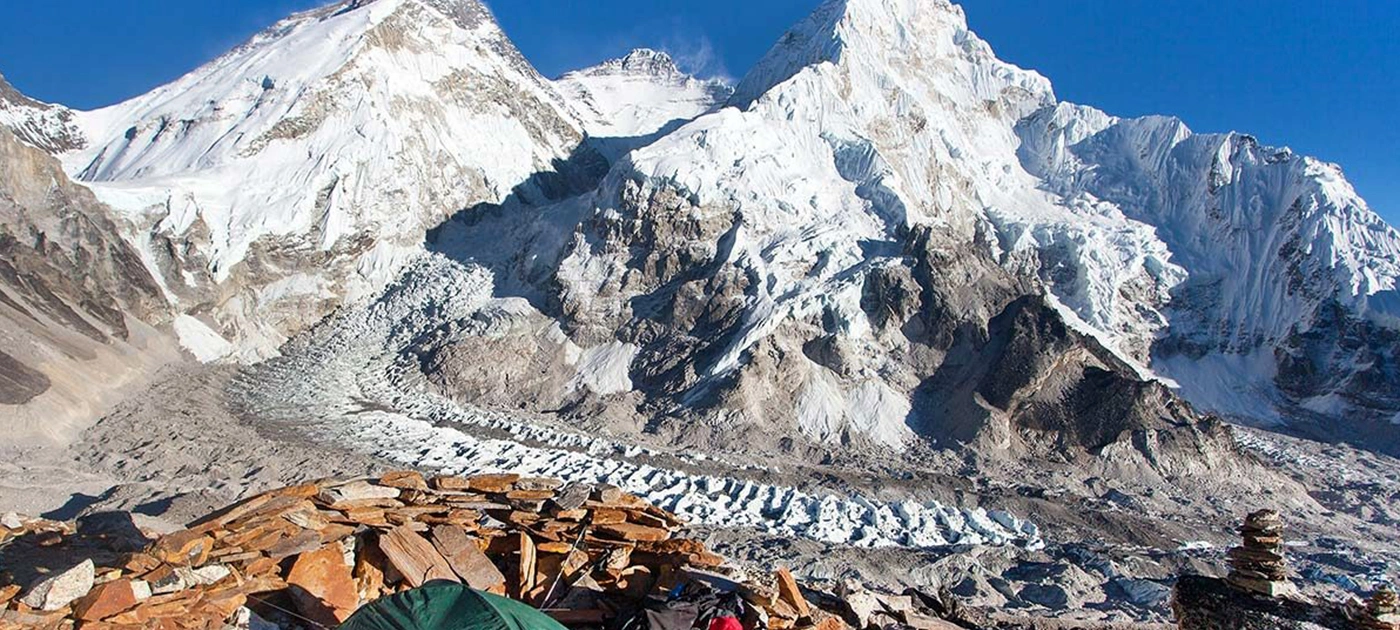
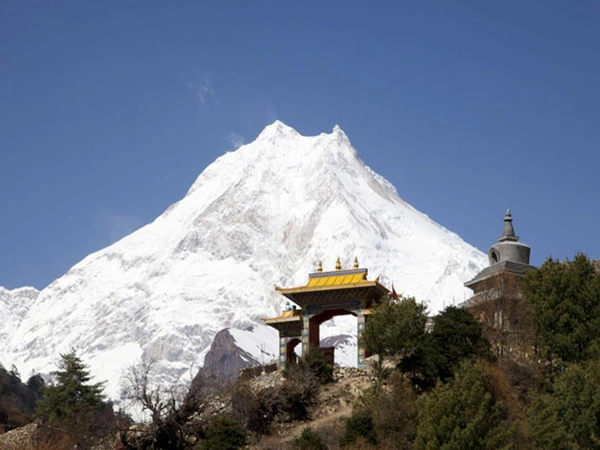
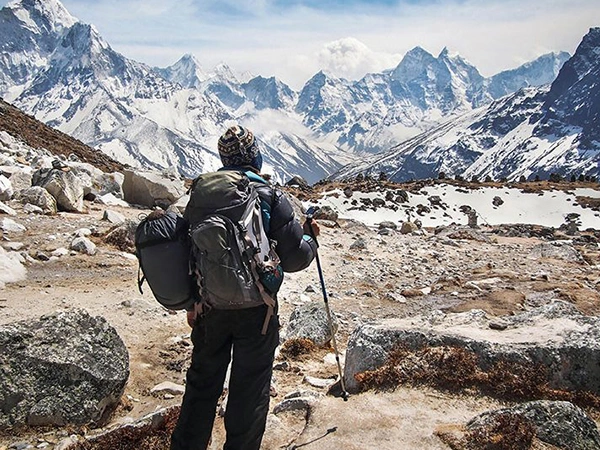
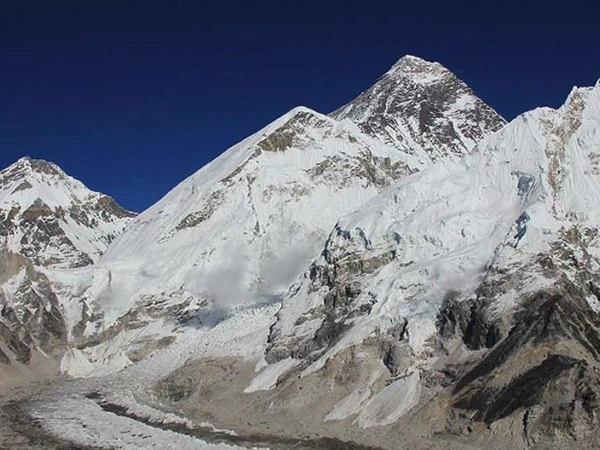
![Best Time to Do the Tsum Valley Trek in Nepal [With Trekking Tips]](https://himalayasonfoot.com/uploads/blog/best-time-to-do-the-tsum-valley-trek-in-nepal.webp)
